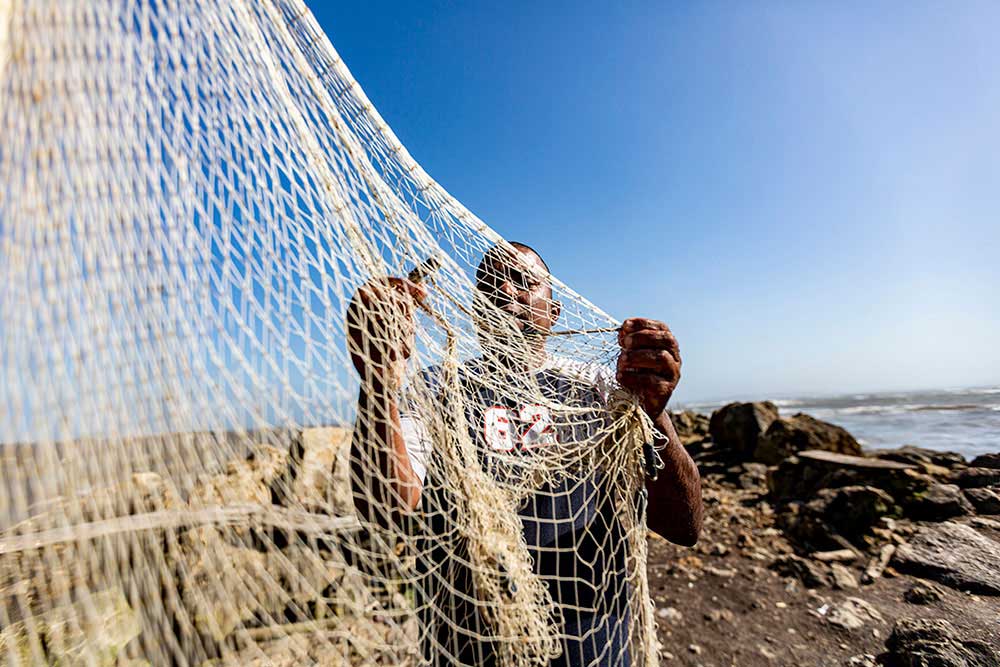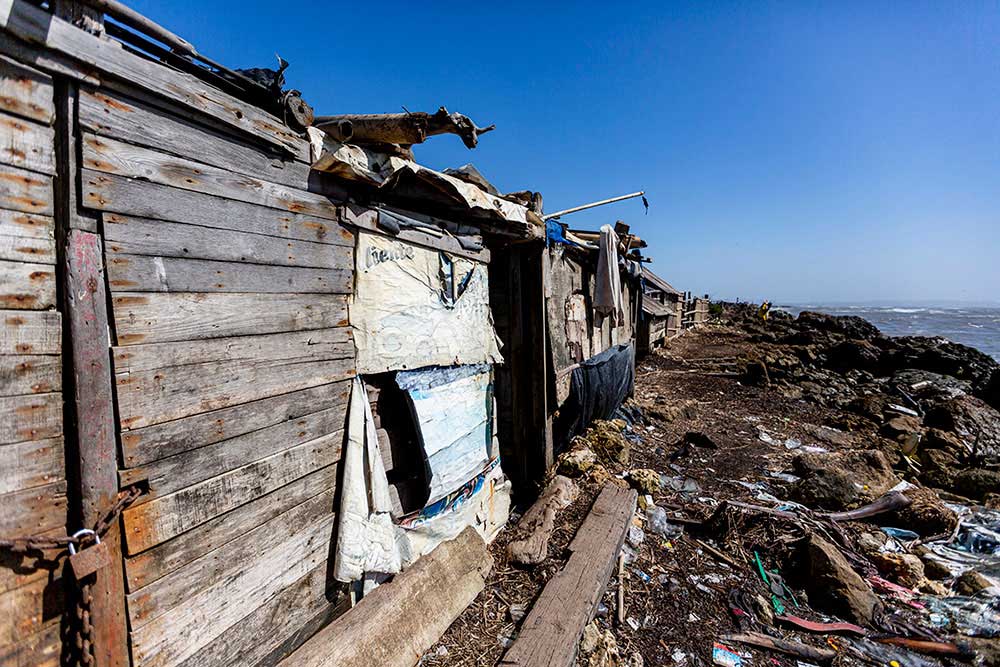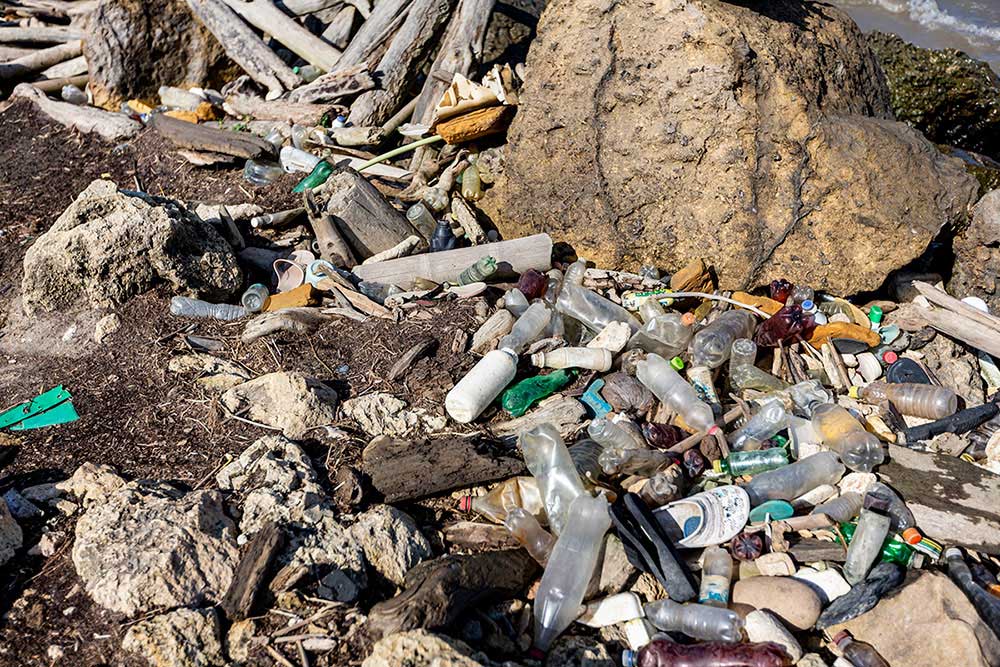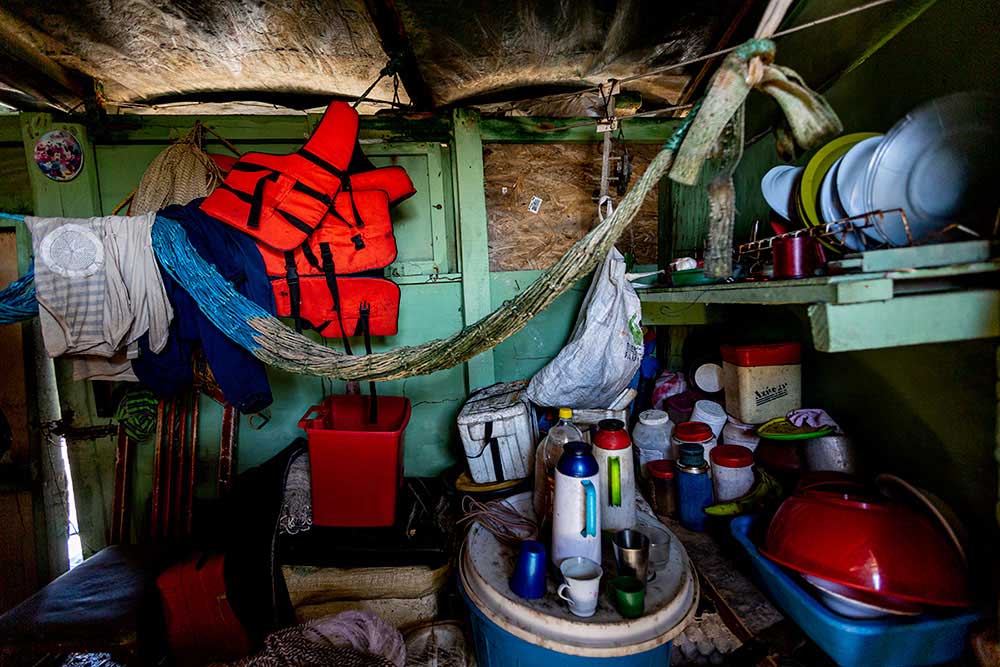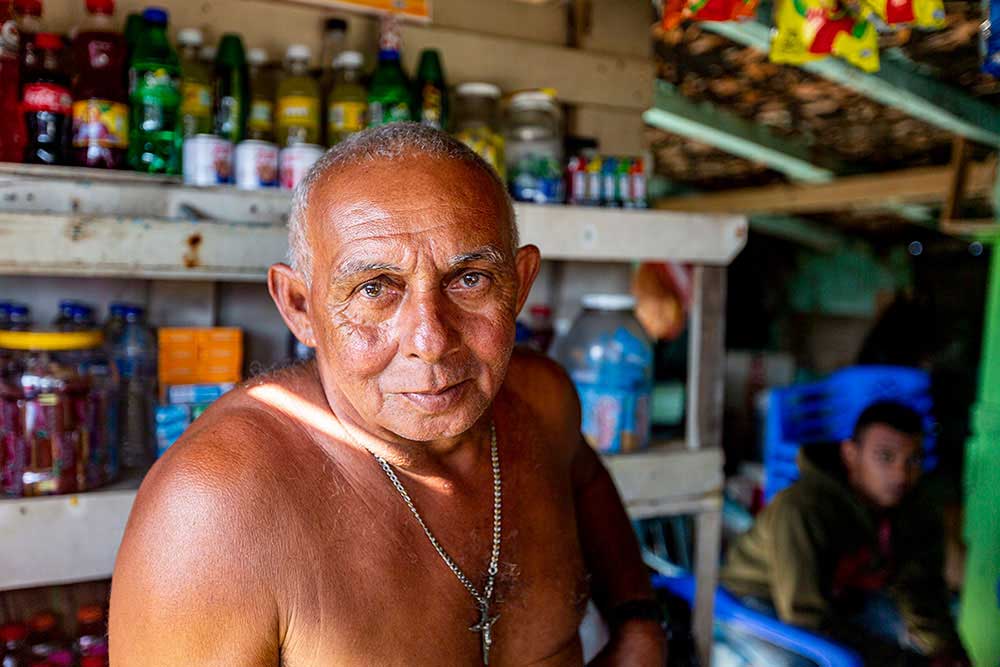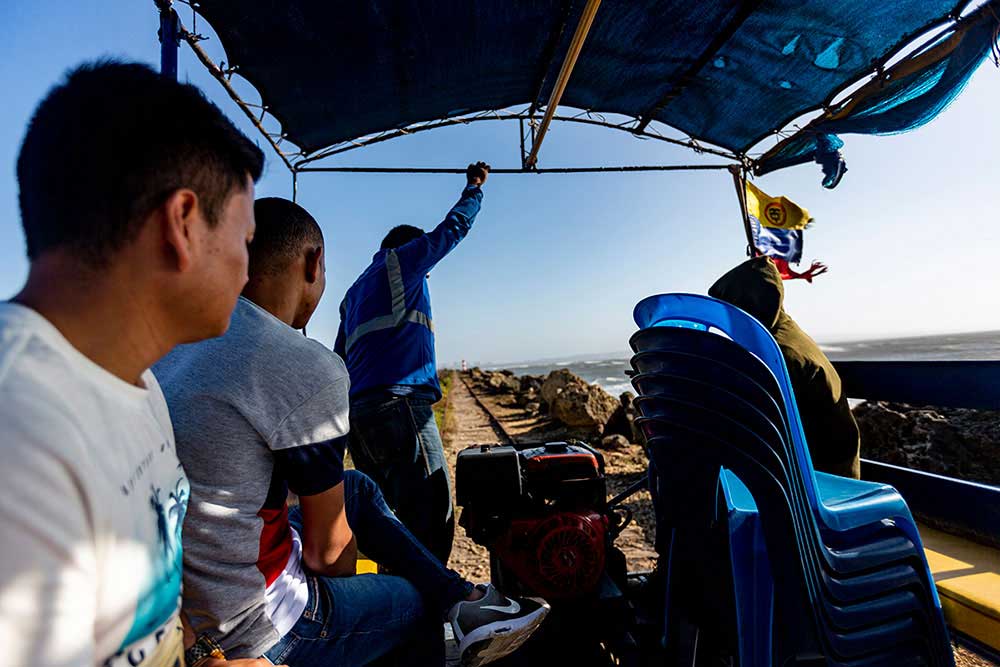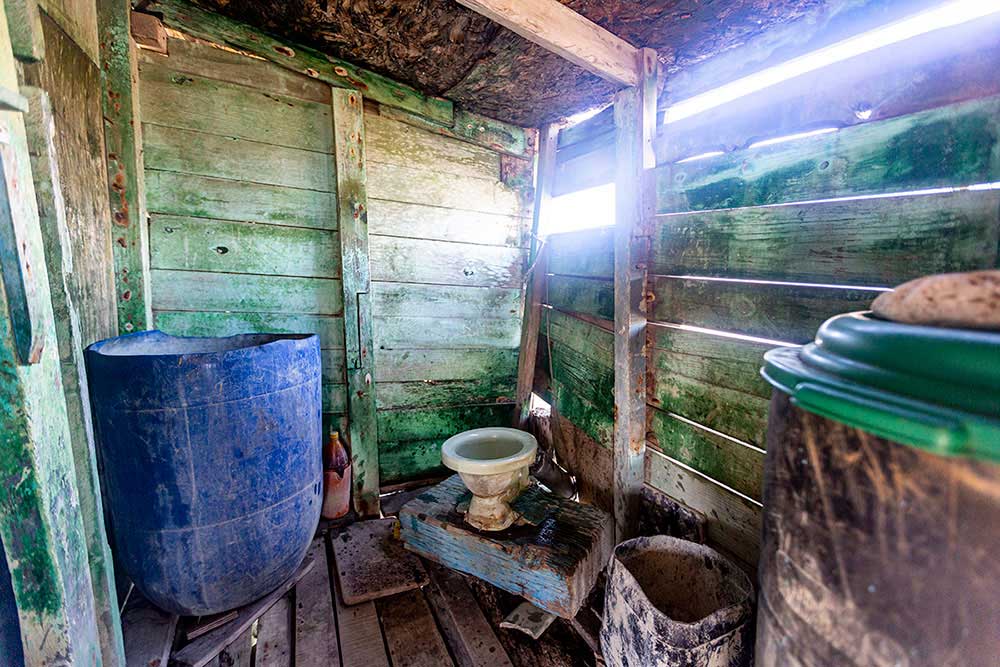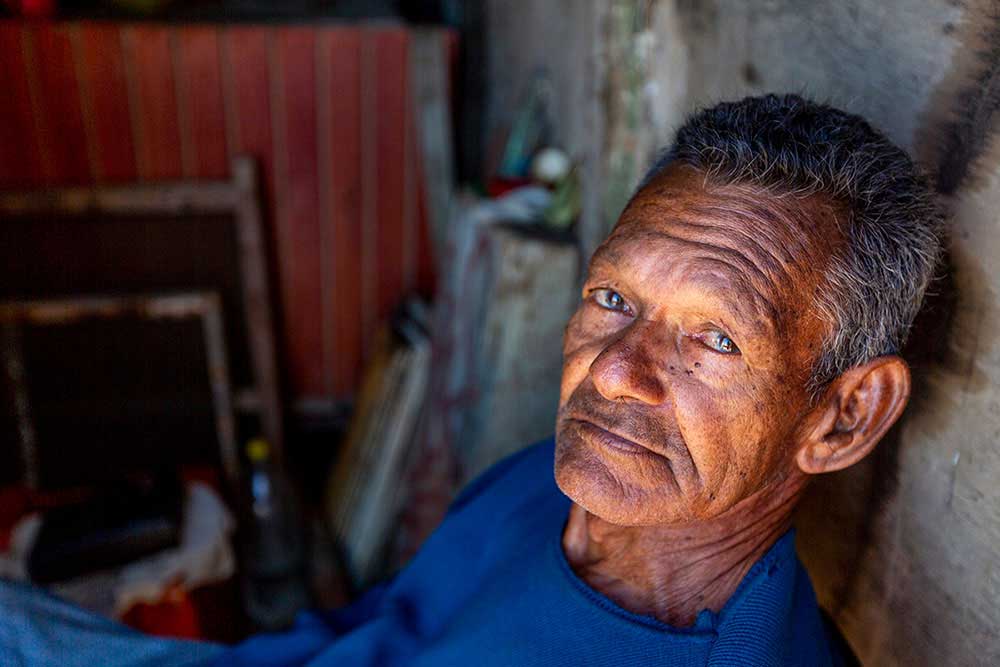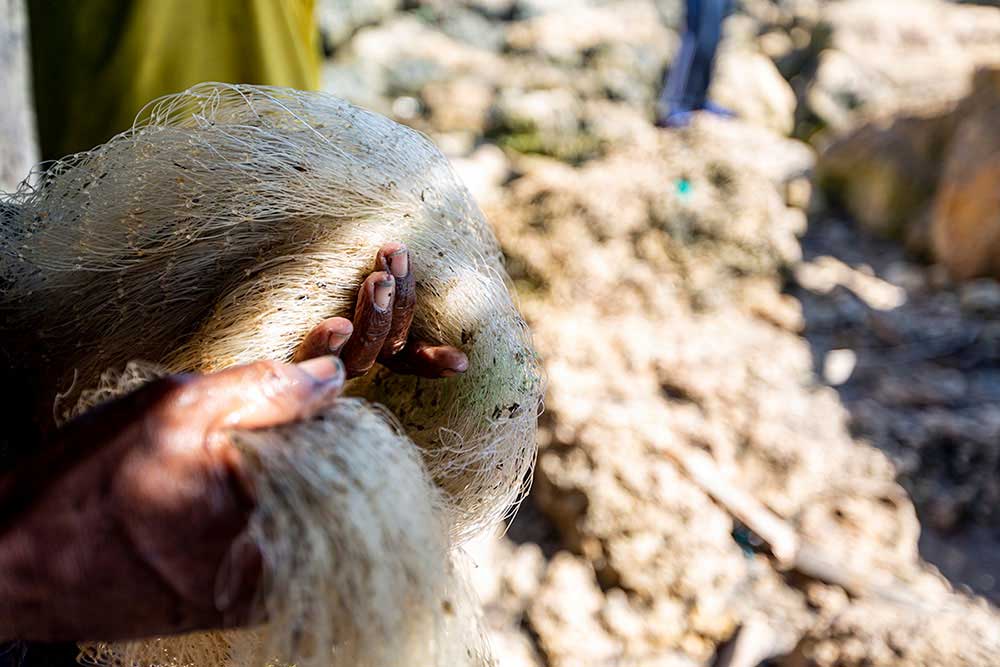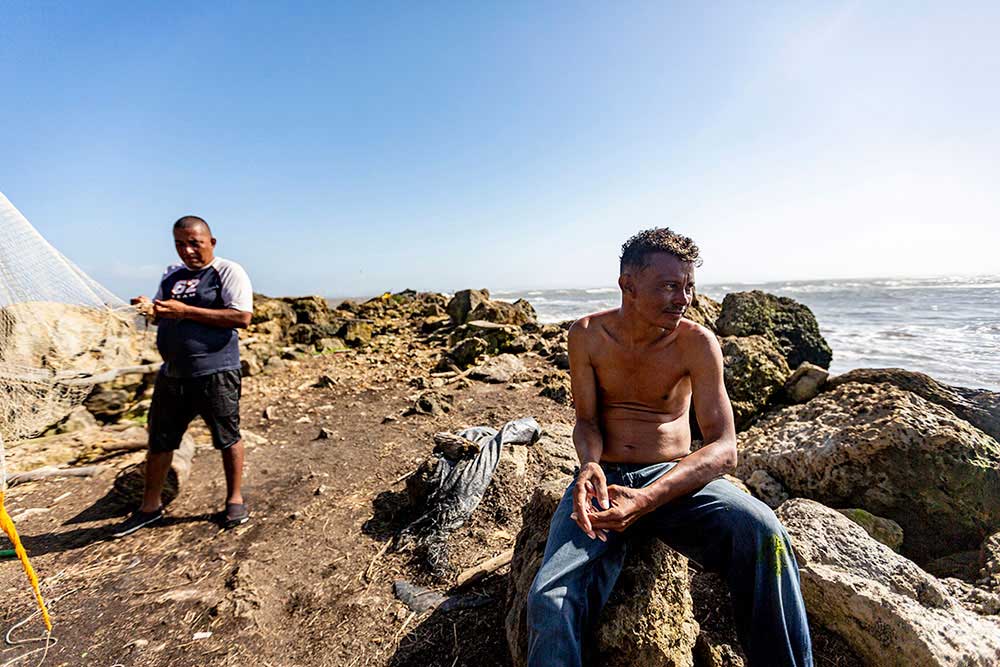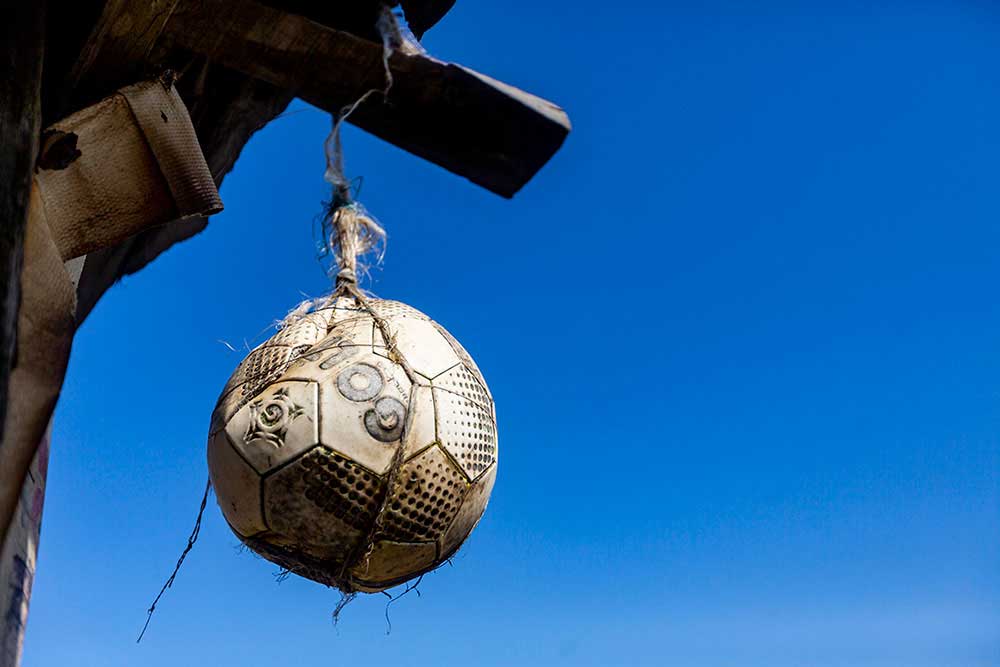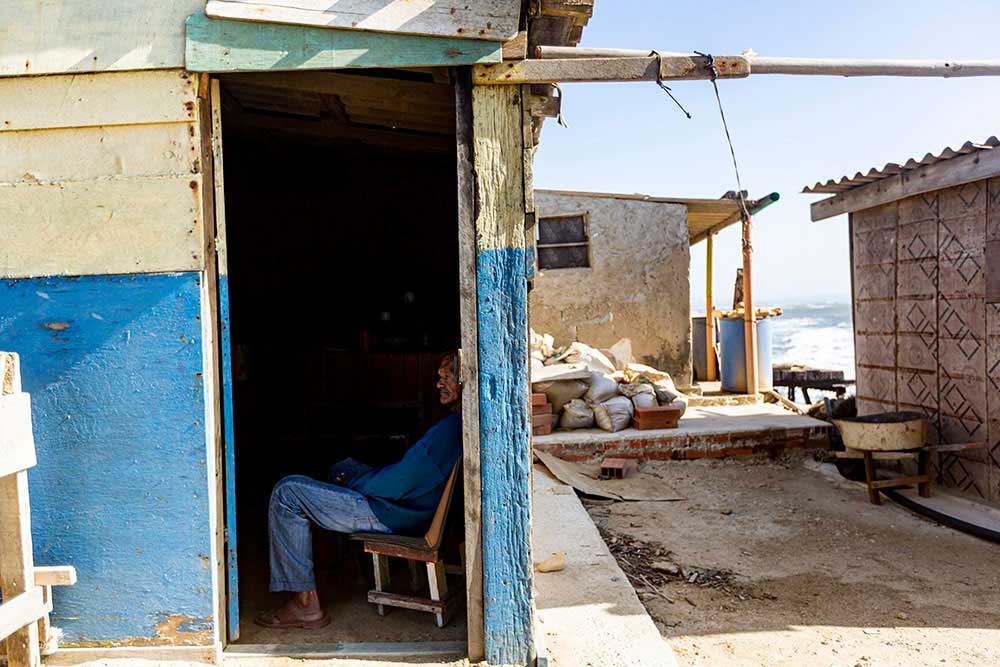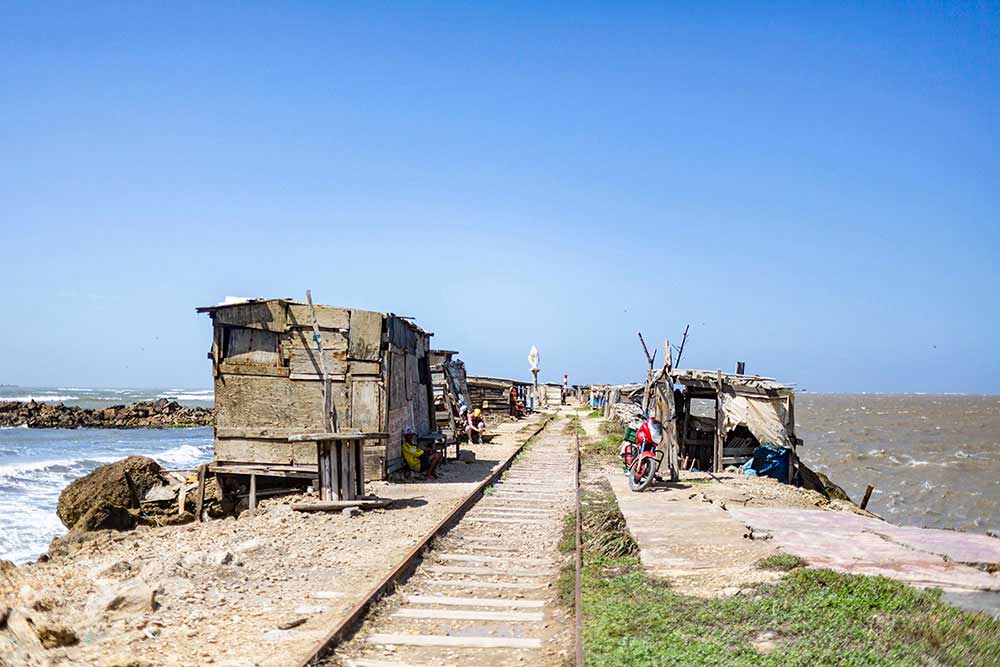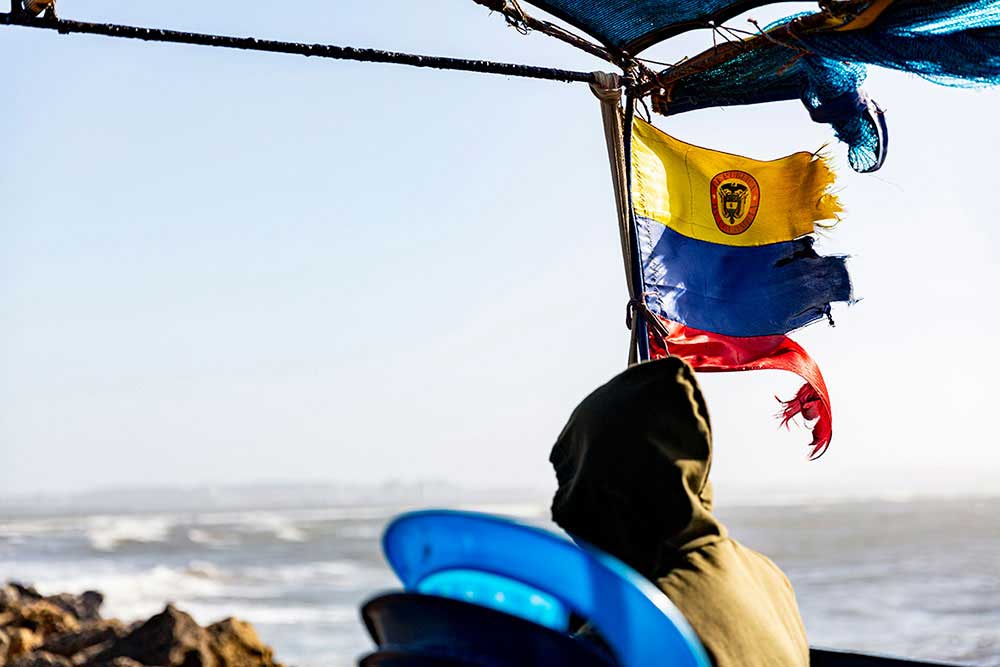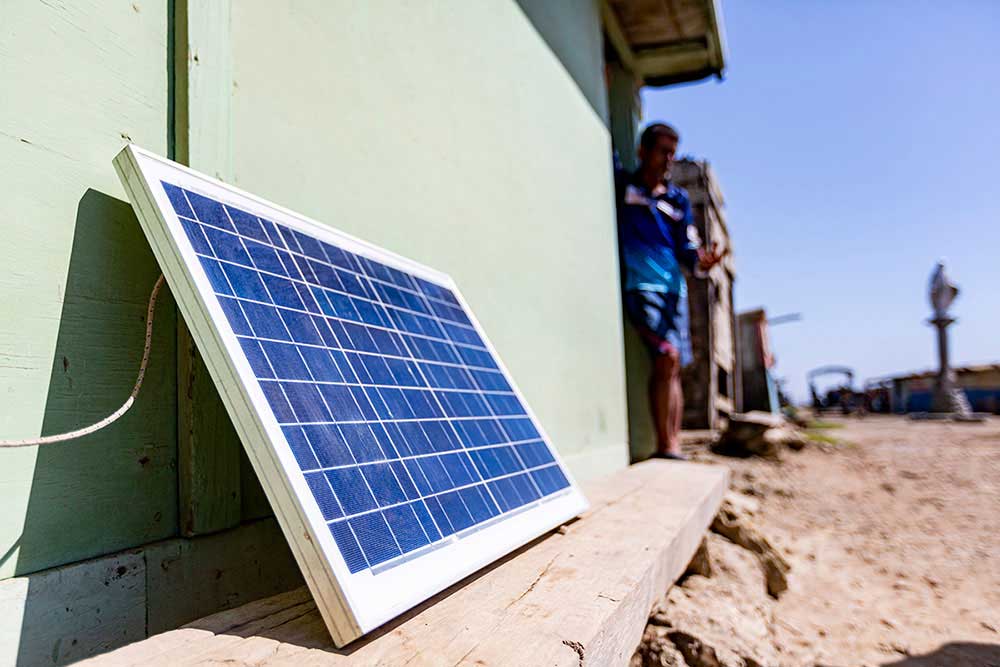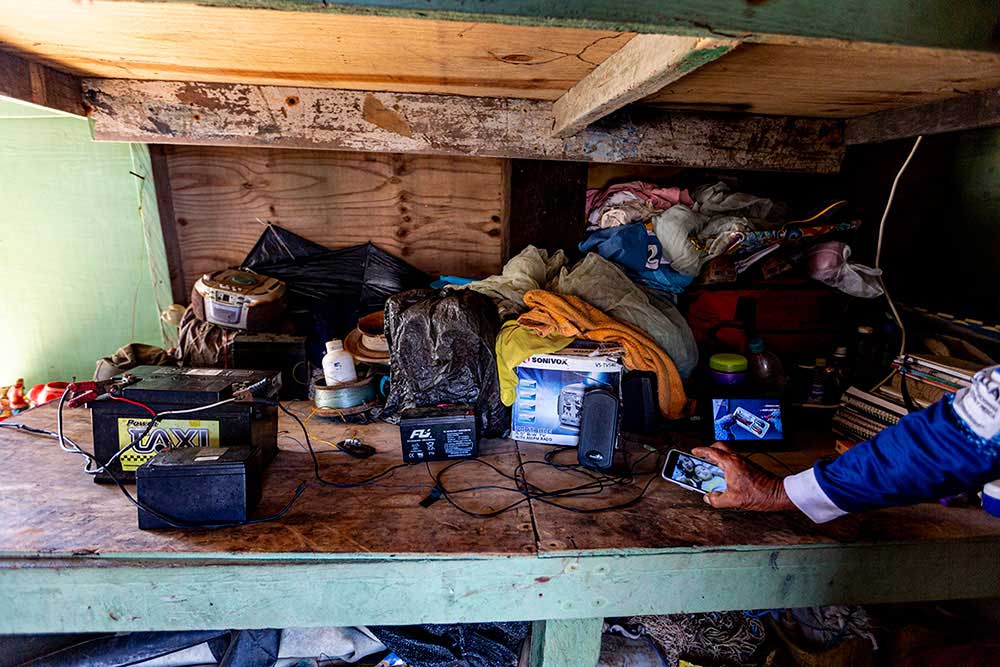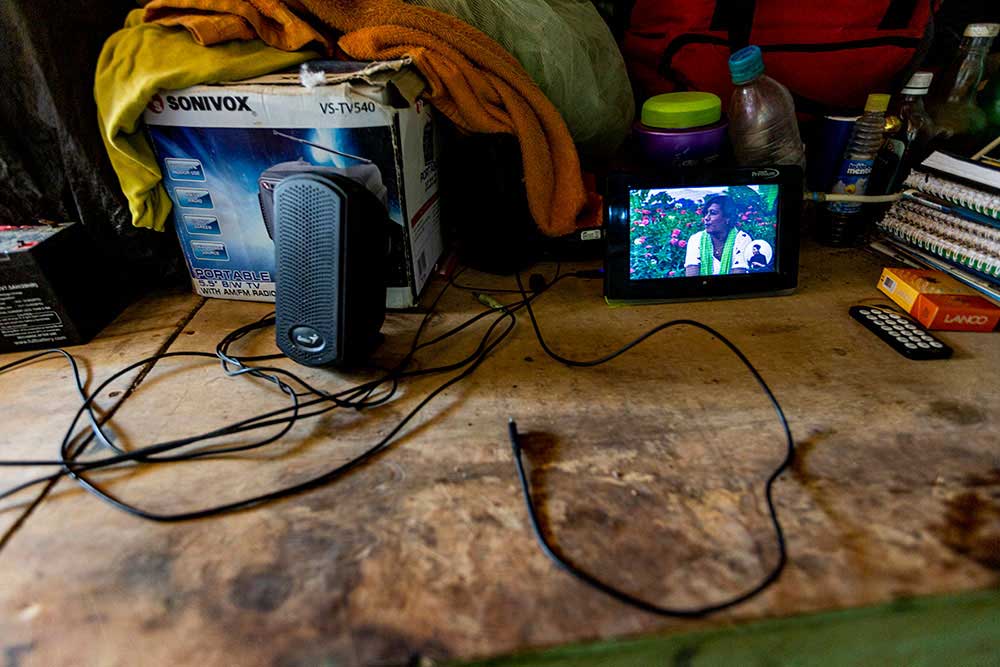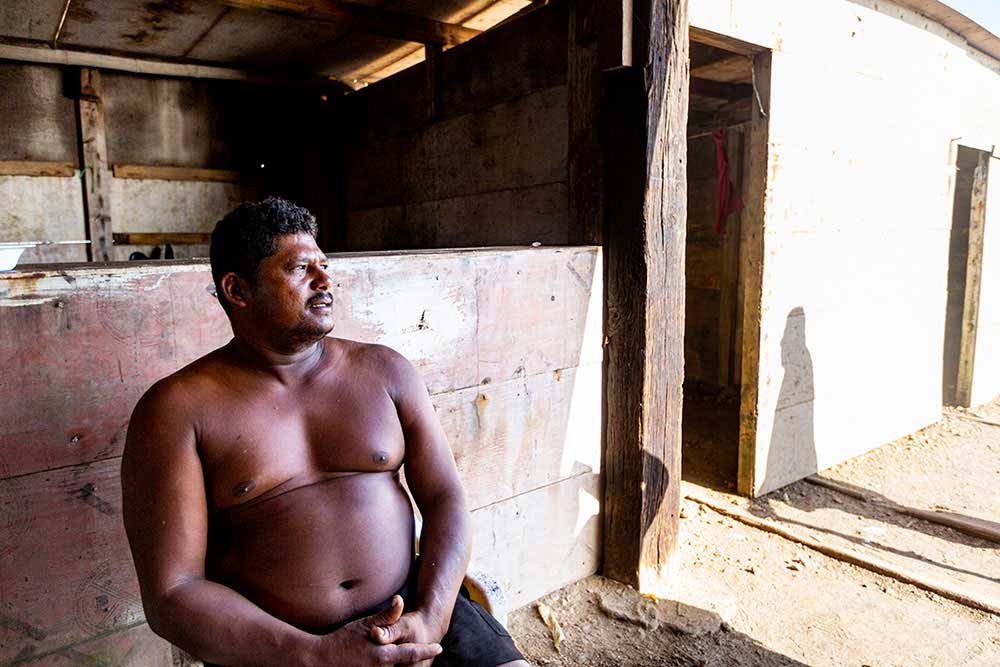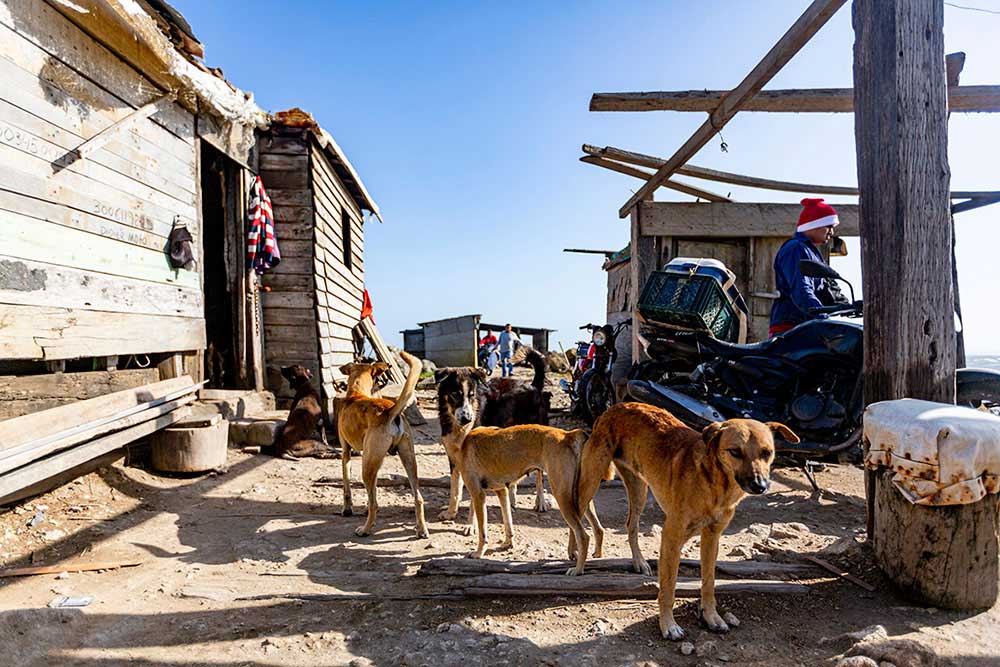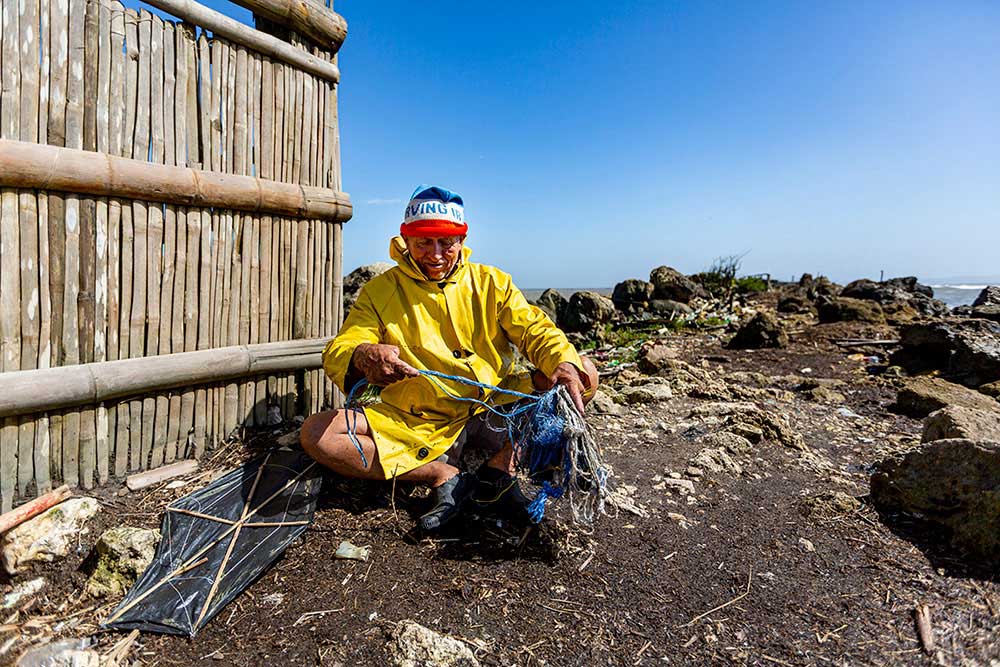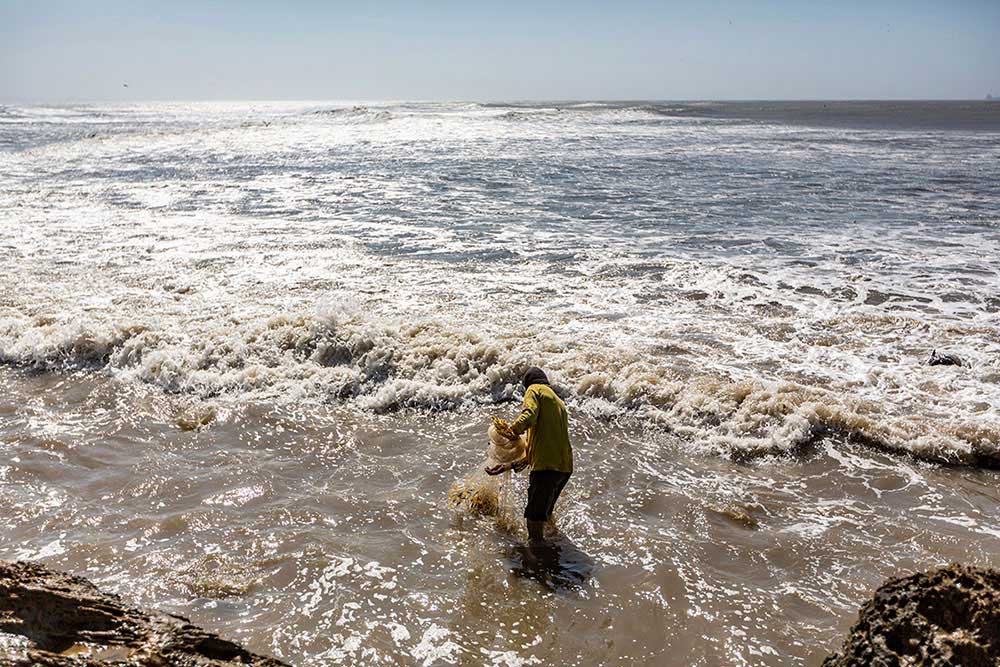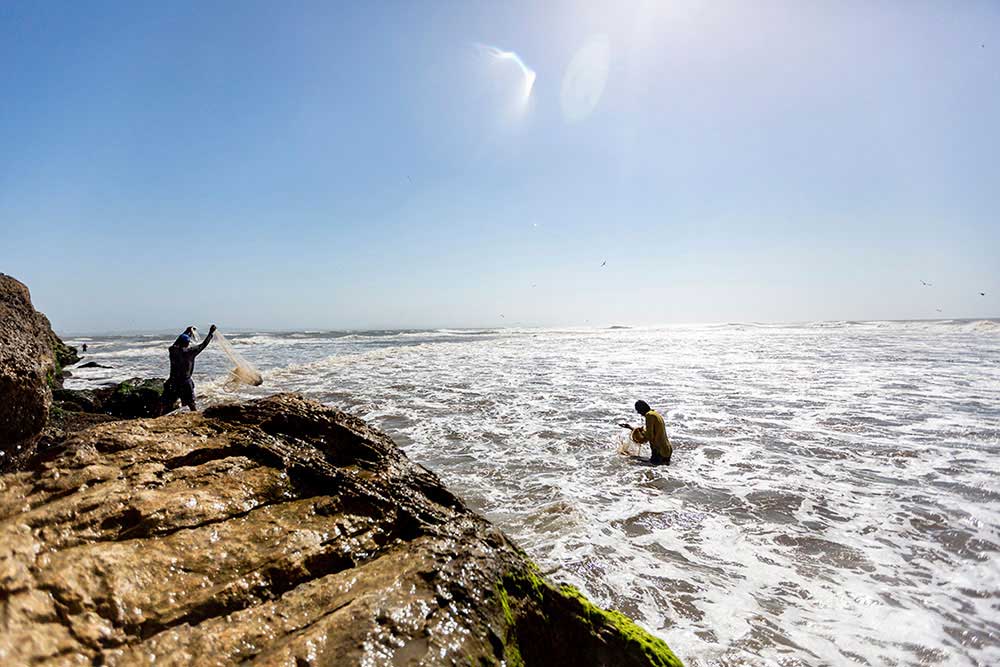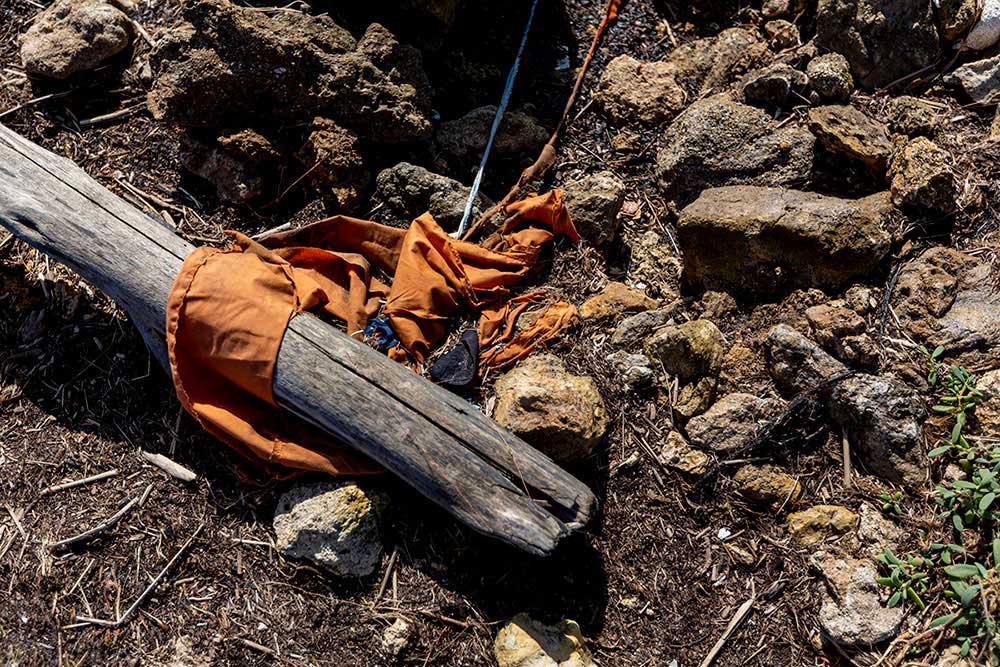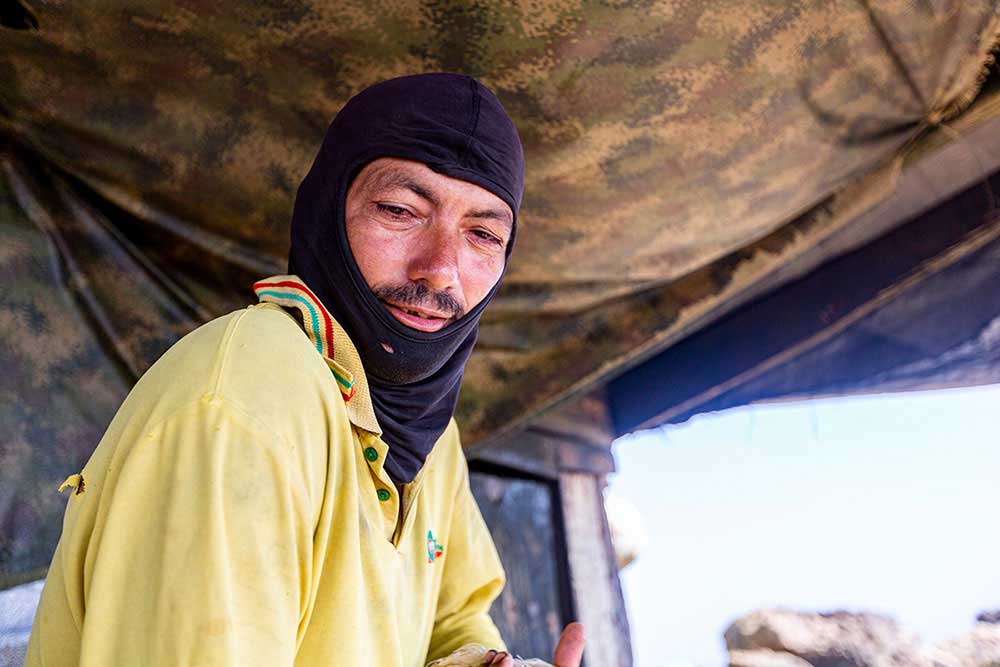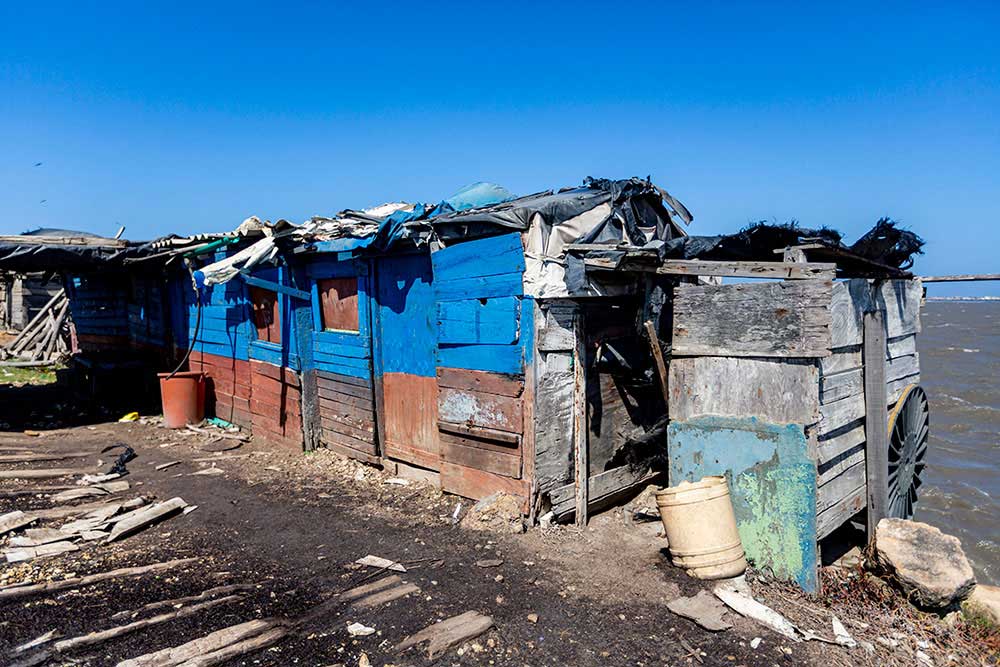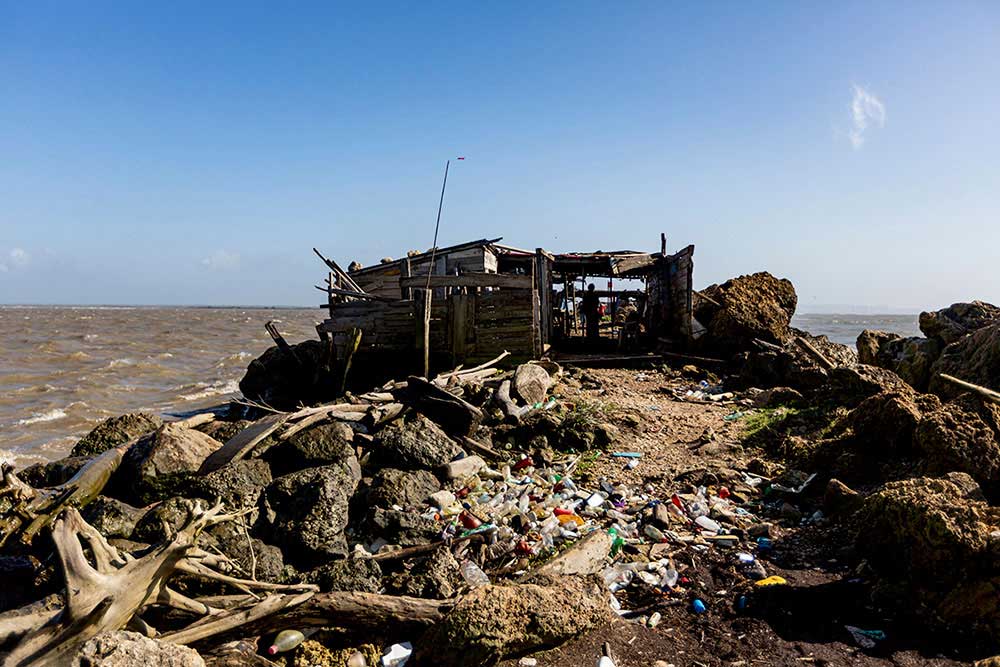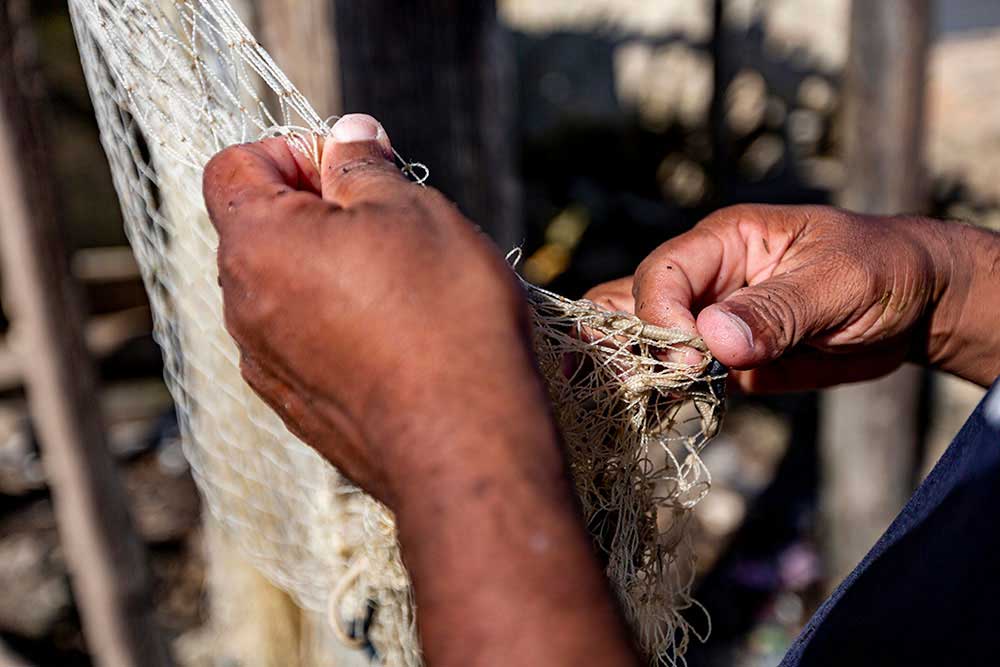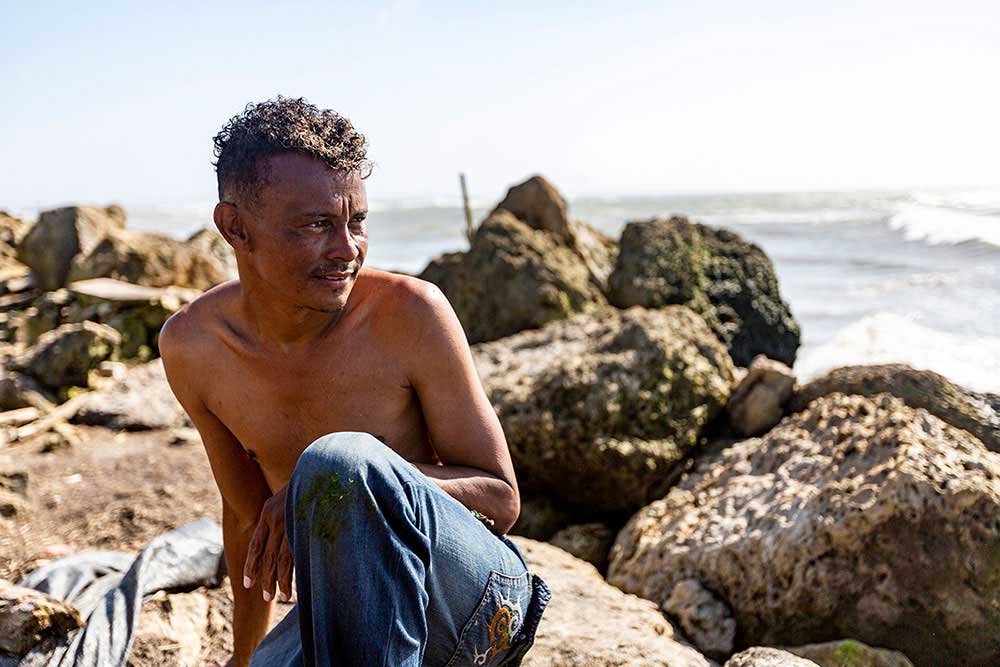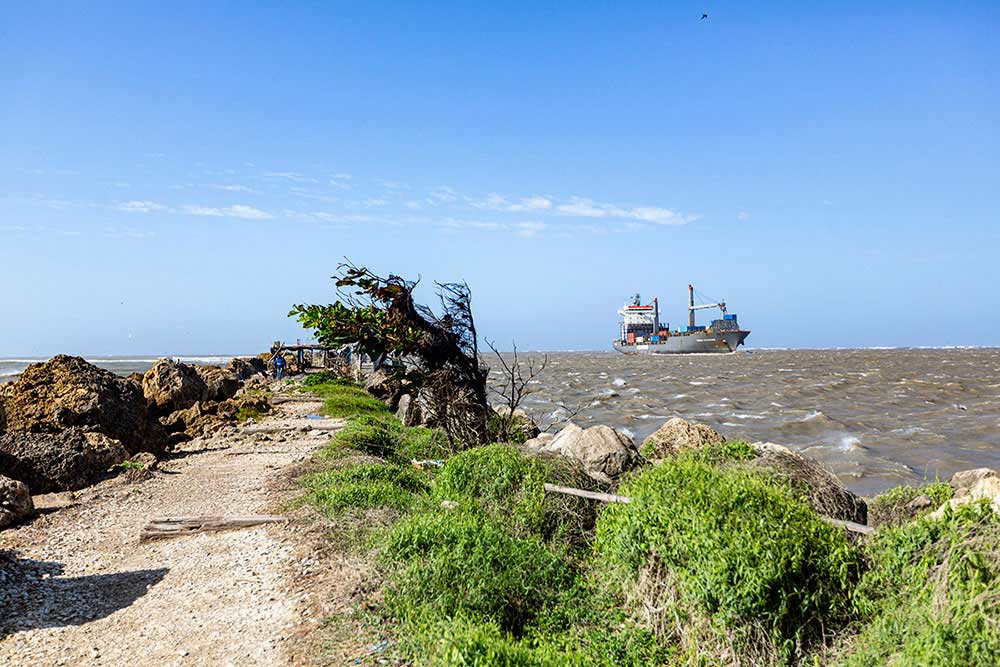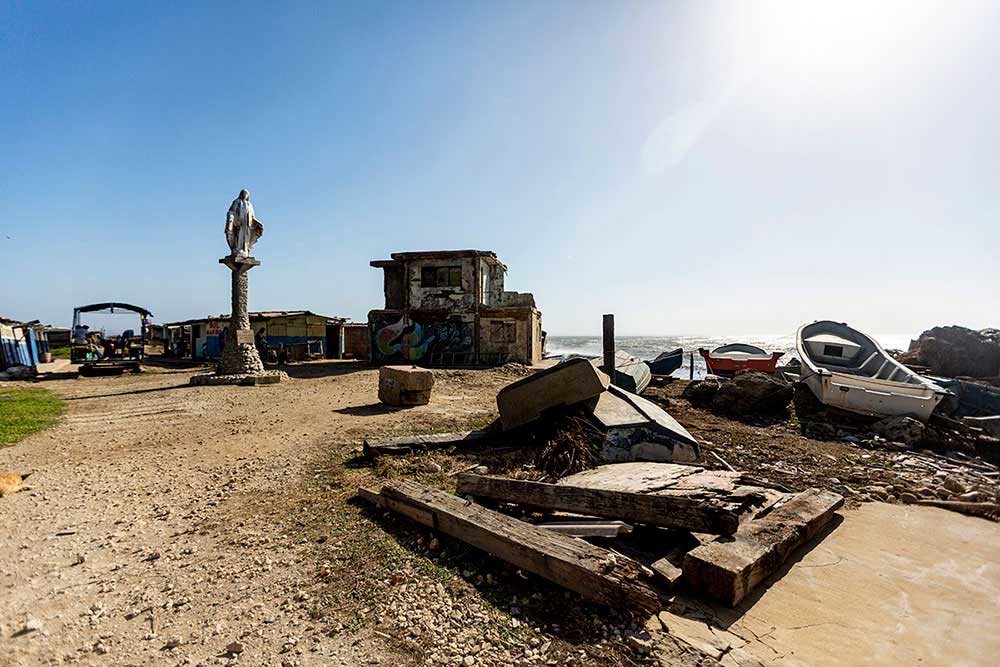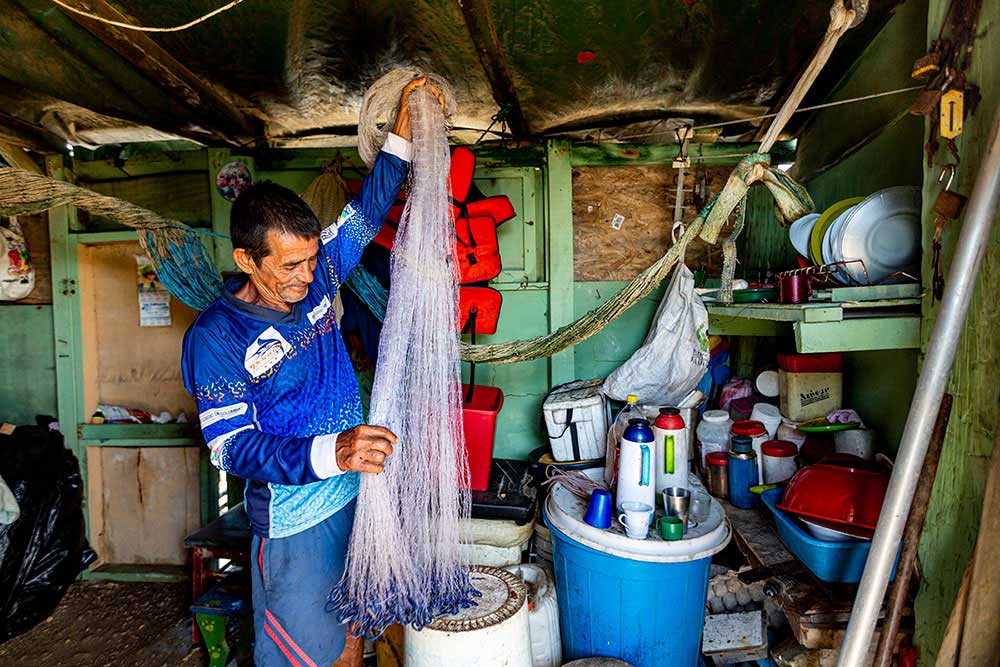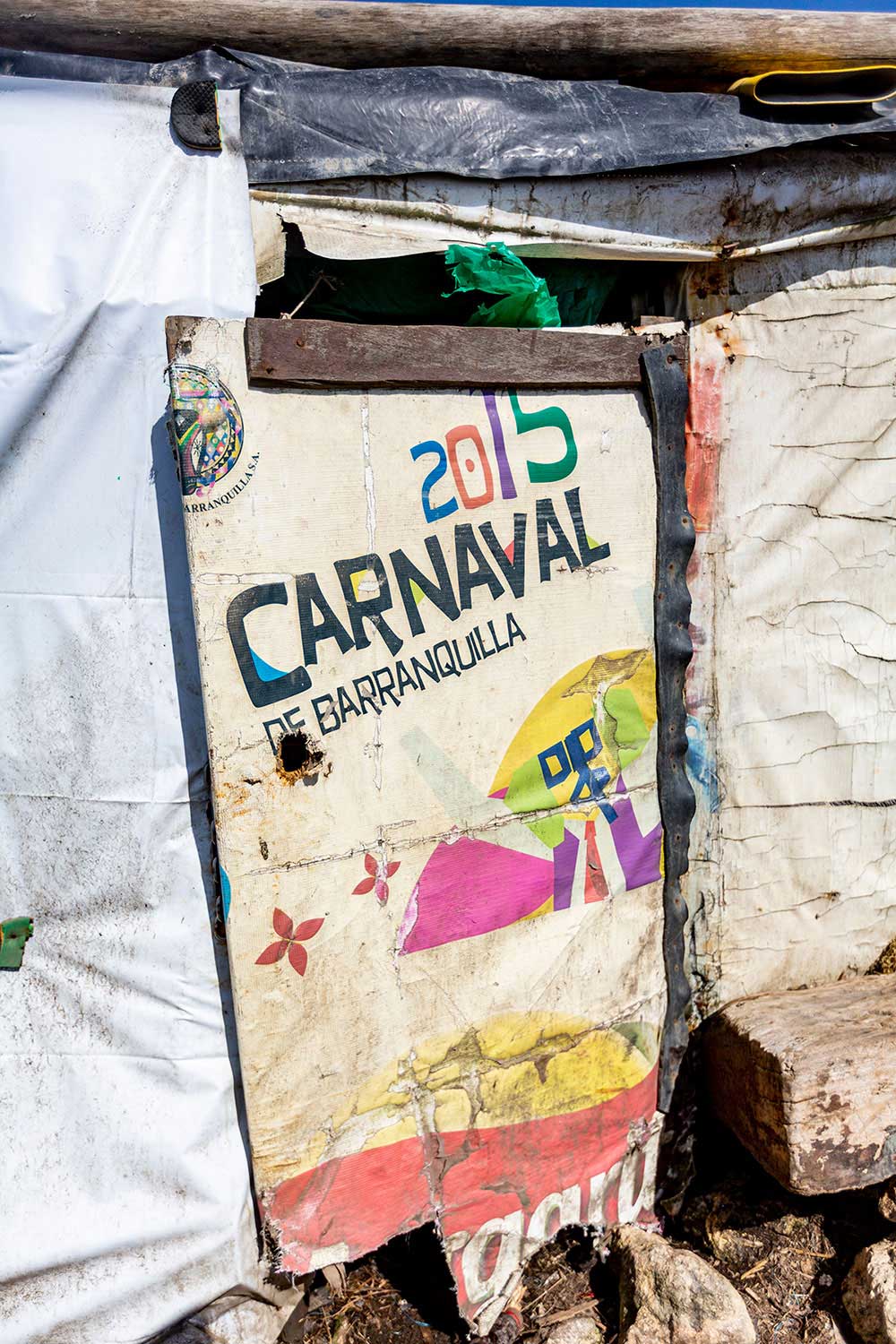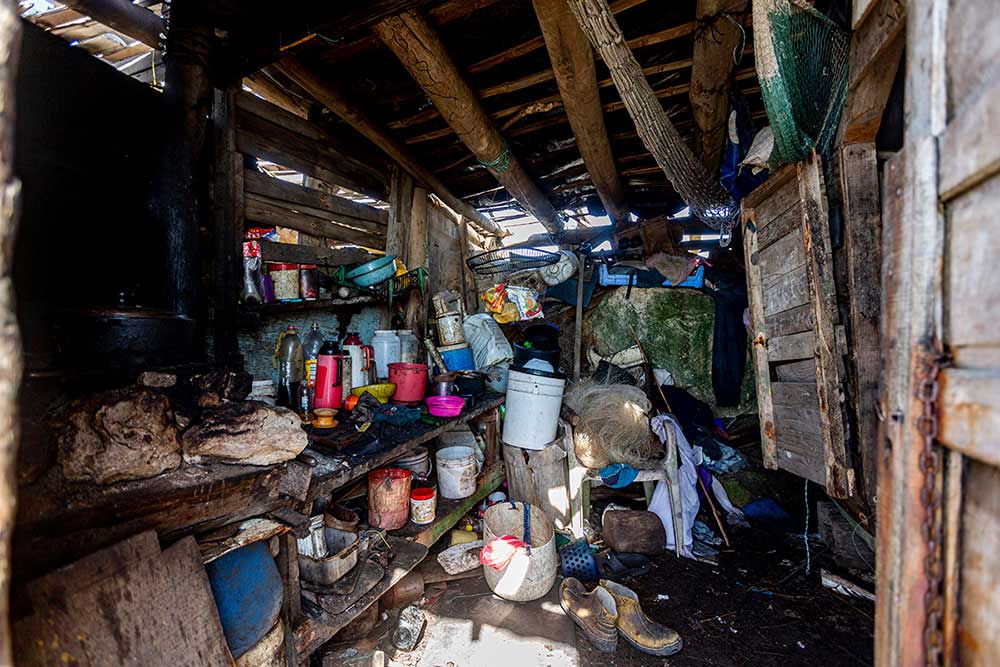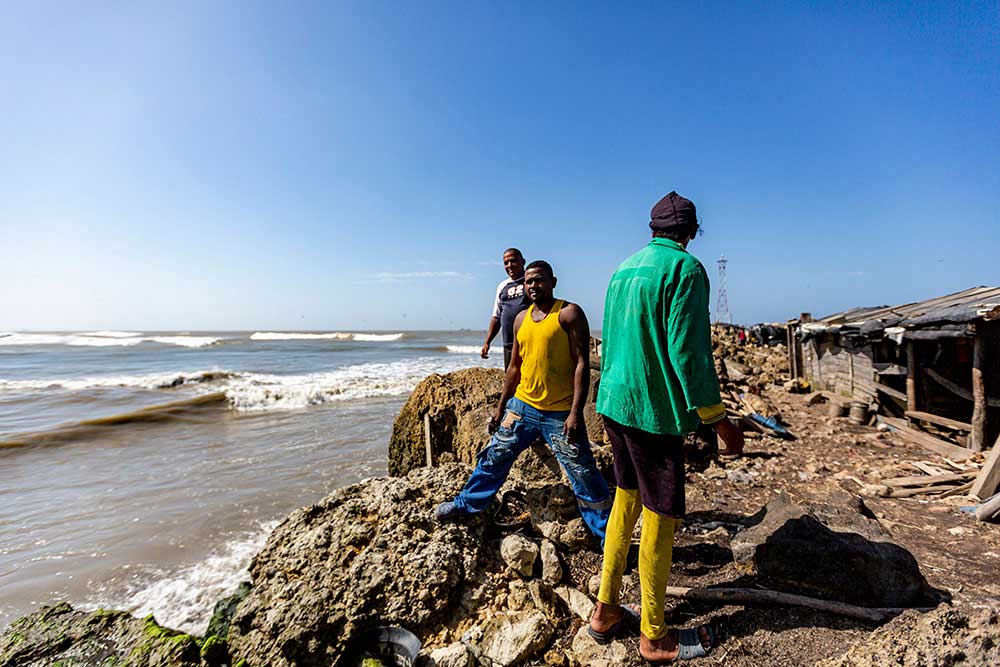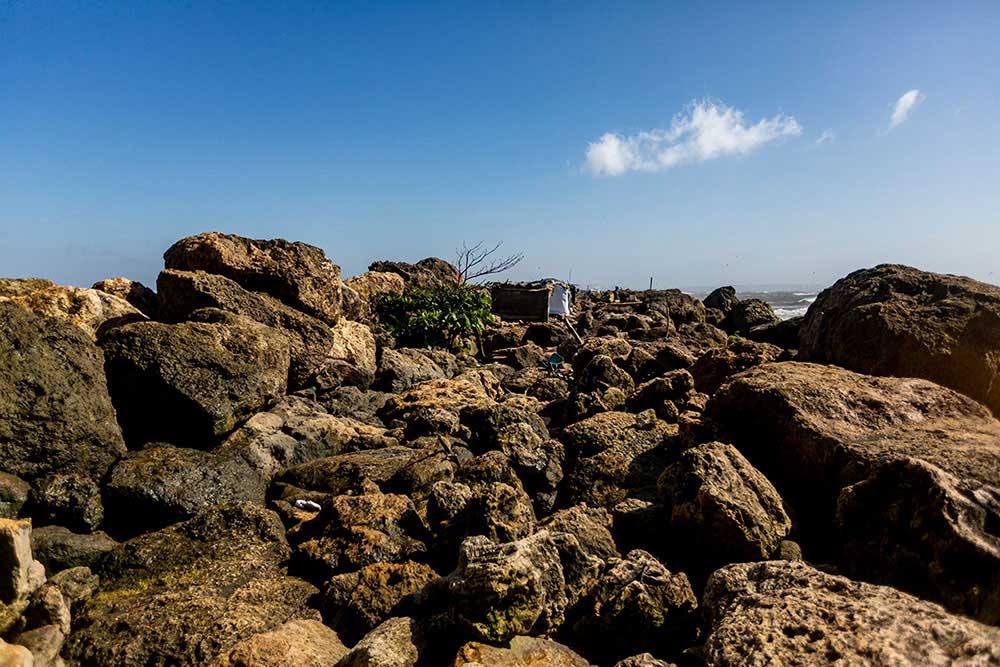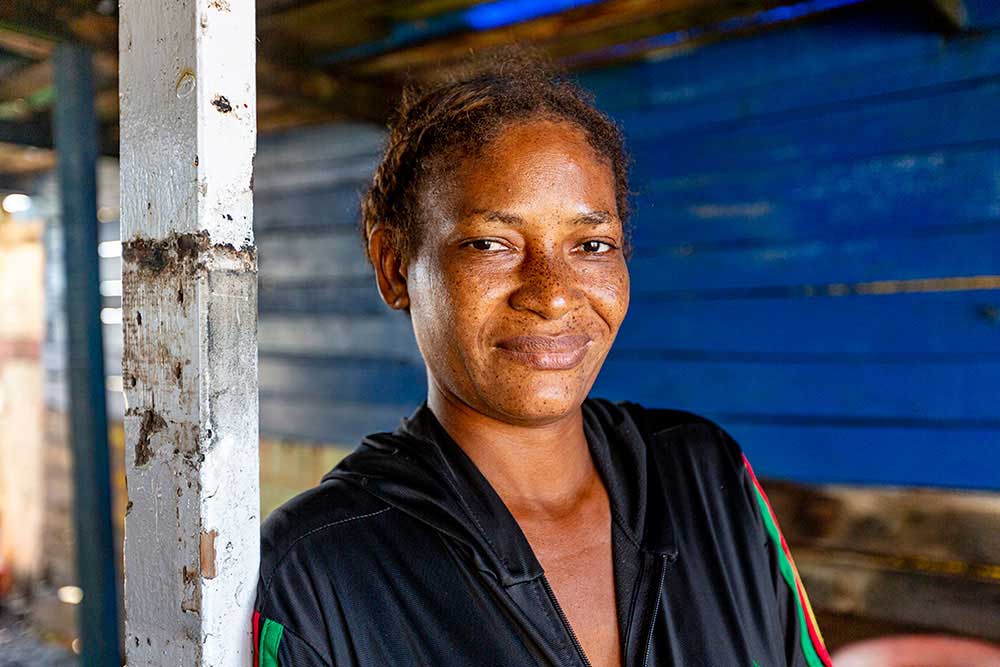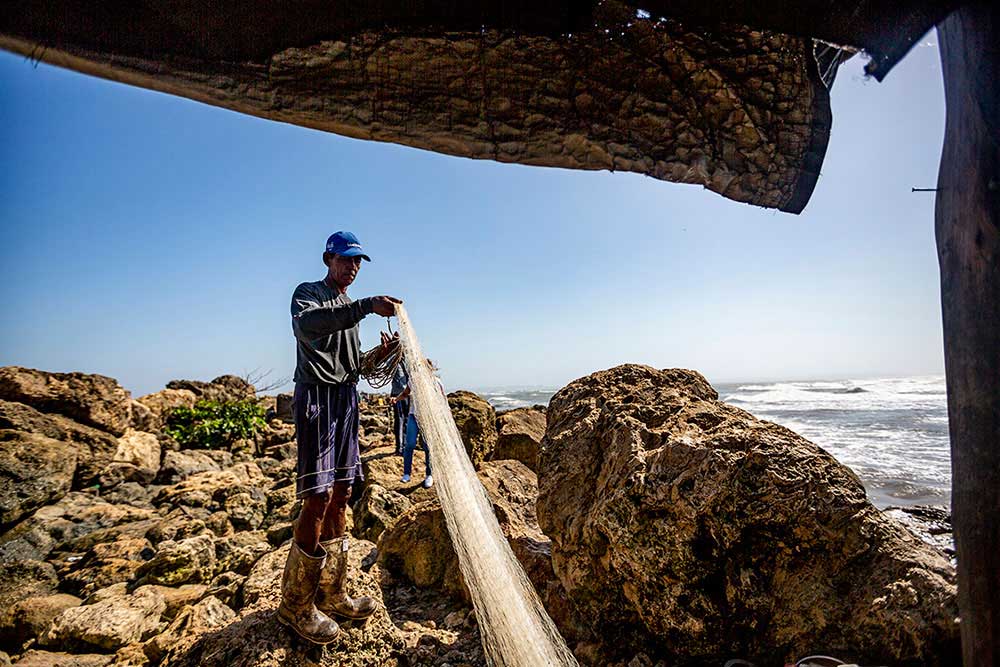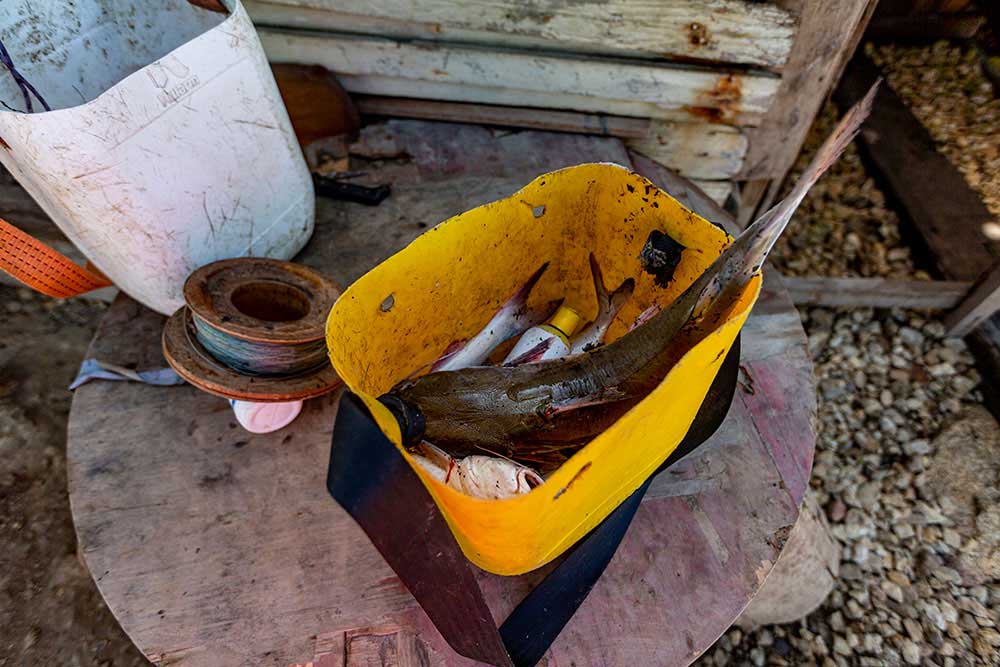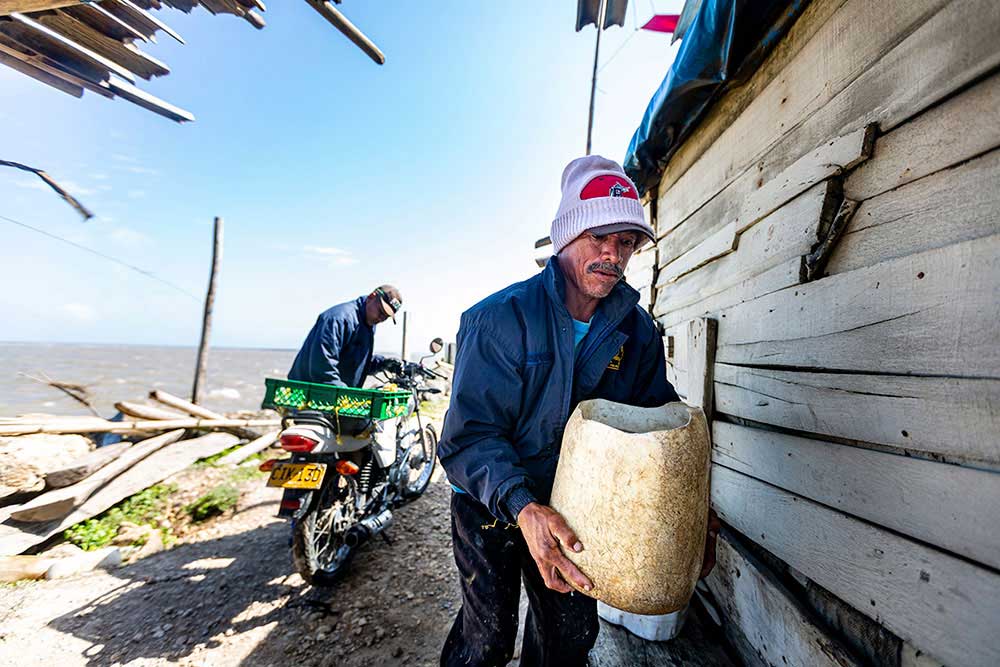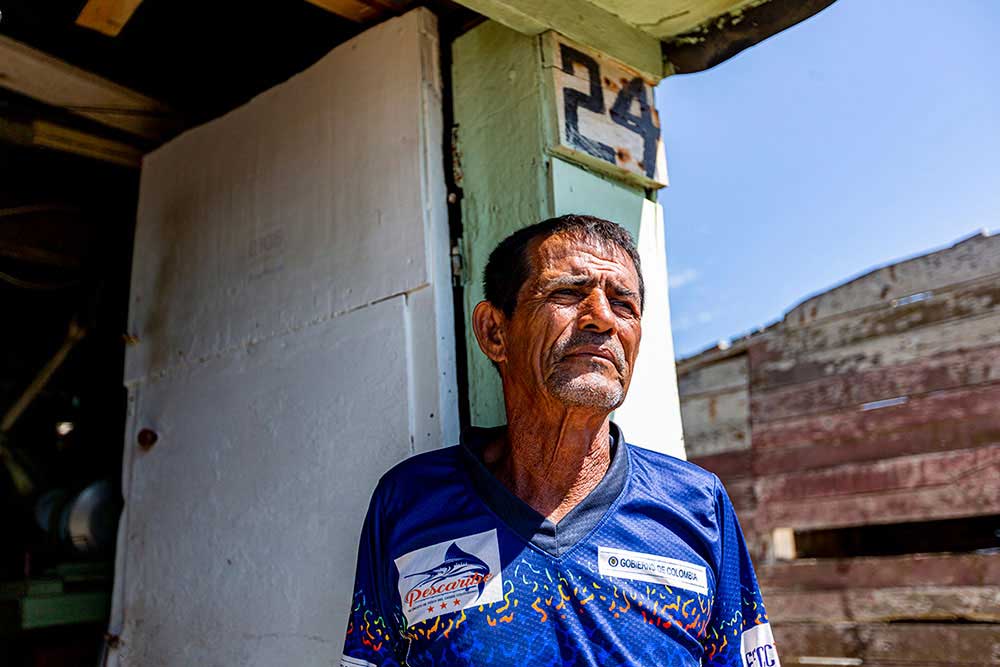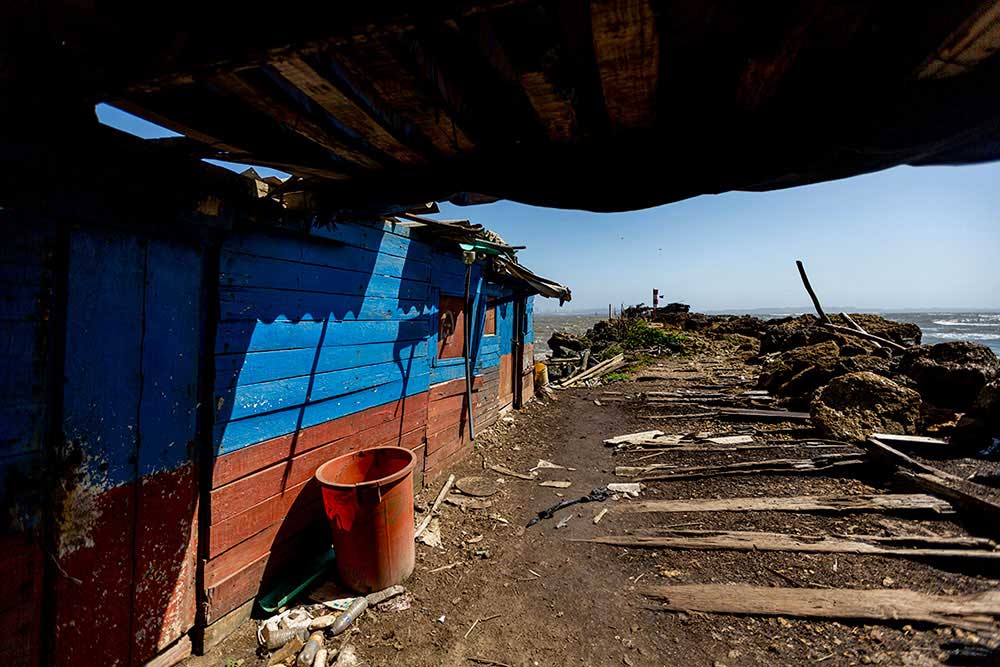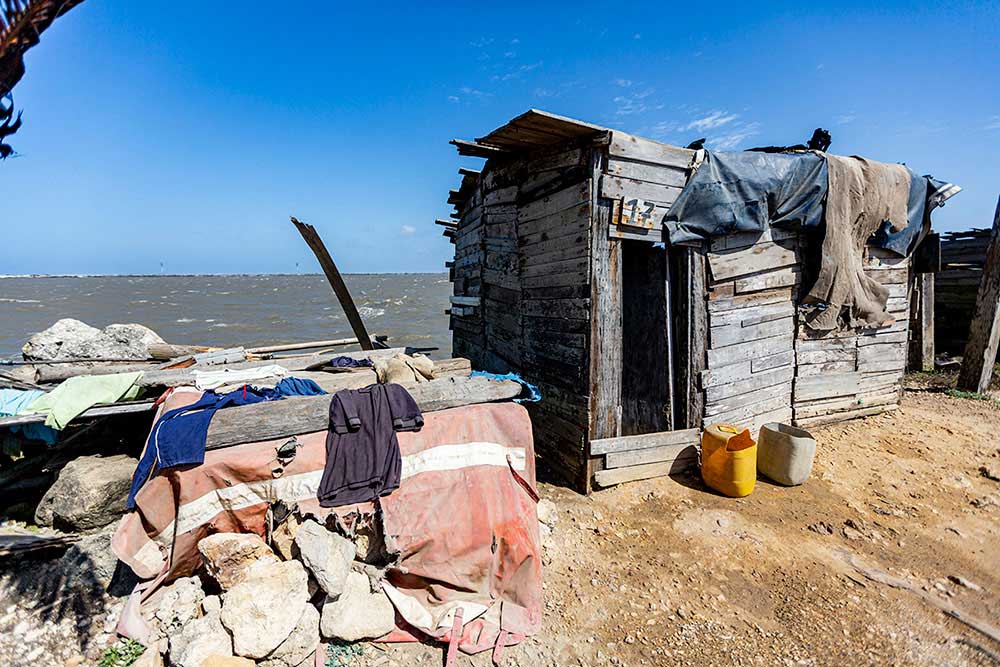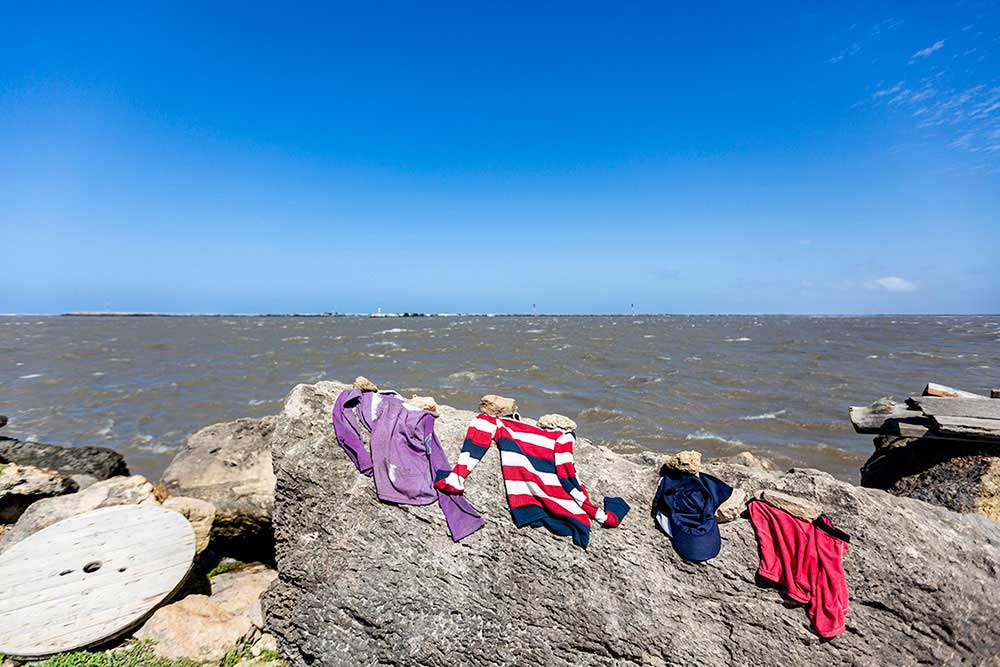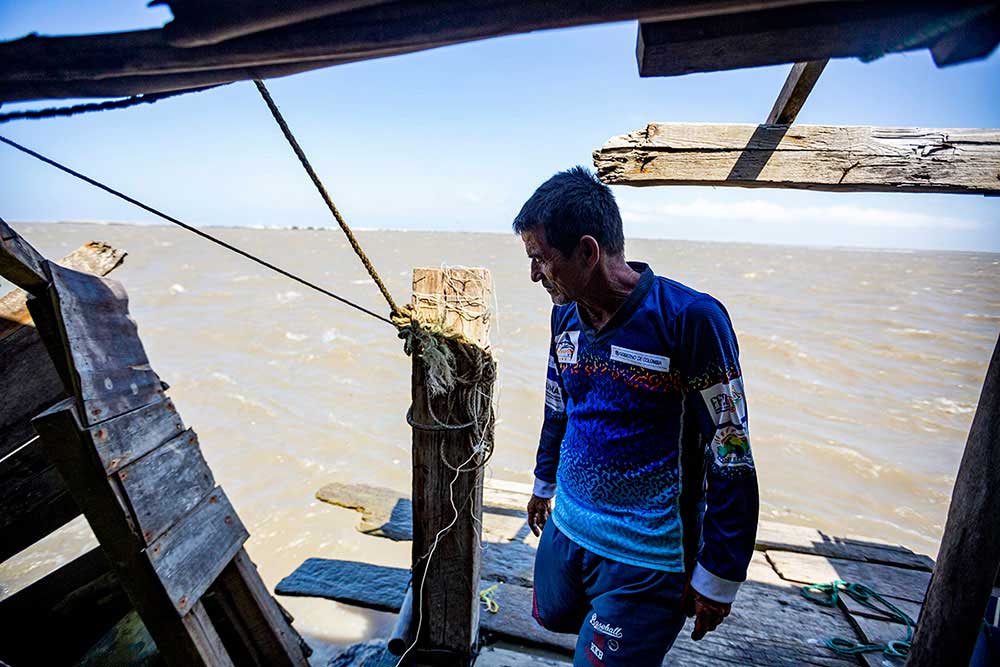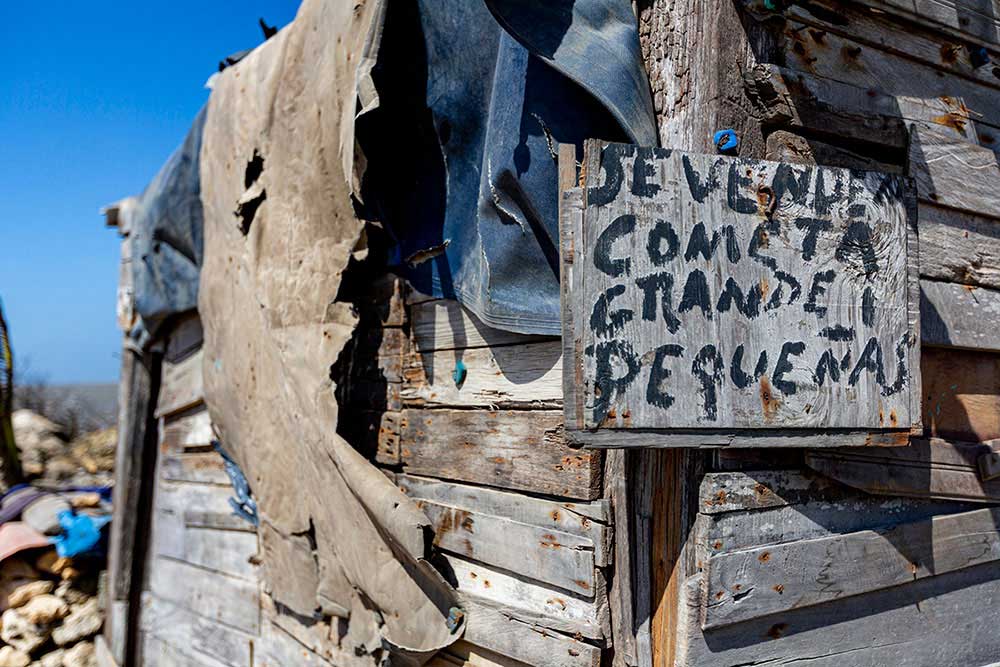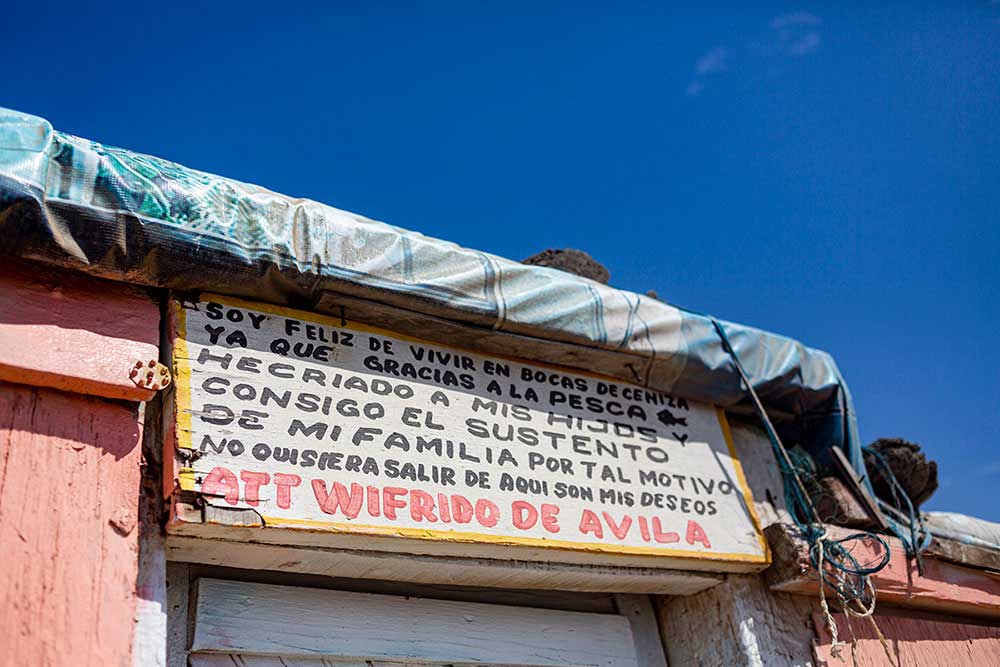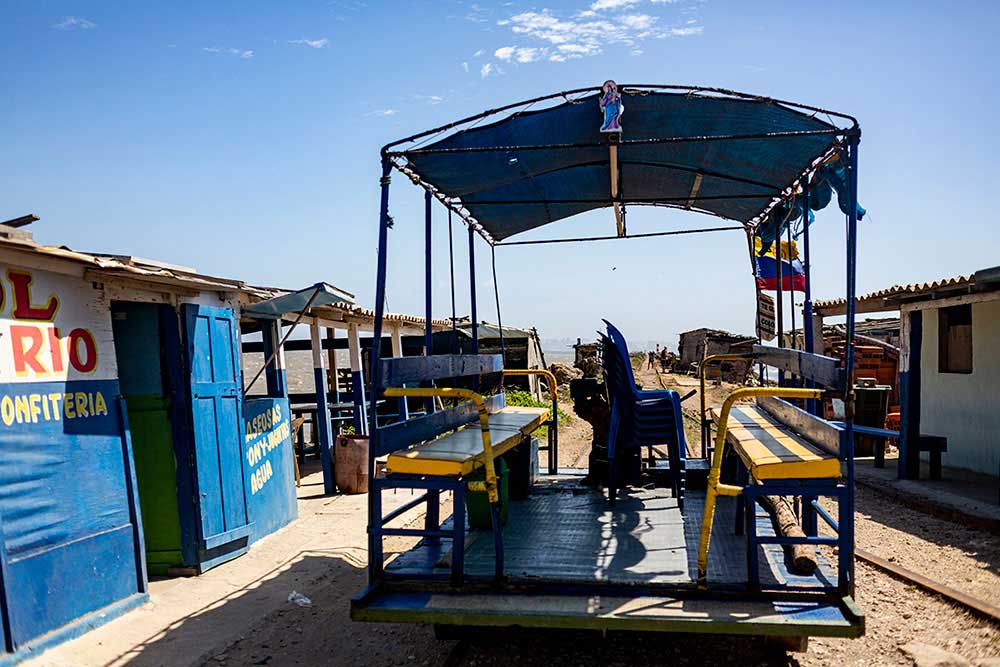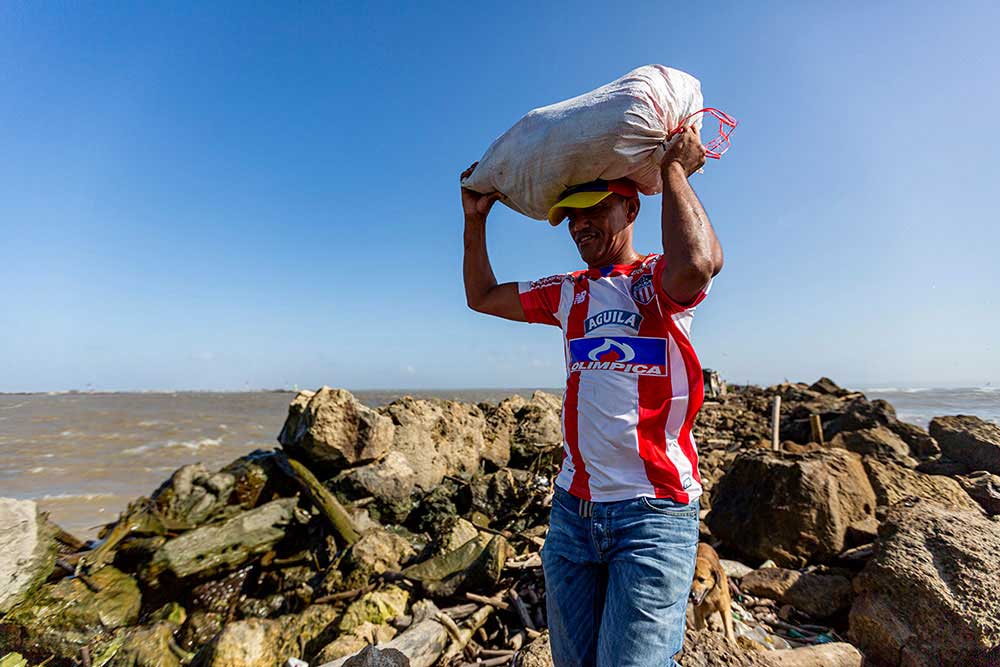The murky waters of the river flush through the train of rocks standing on the embankment.
As the louder and unstable motor of the small train overwhelms the passengers, the ride becomes an experience for those who visit for the first time. Although it’s risky, it’s part of daily life and transportation to stay connected to their families for those living there.
Background Story
Bocas de Ceniza, “Ash Mouth,” is where the Magdalena River leads to the Caribbean Sea. This location received its name from the ash color water developed once the sea meets the river. The Magdalena River is the most important in Colombia. It flows northward, about 1,528 kilometers through the western part of the country, providing food and sustenance to many fishers of Bocas de Ceniza, Colombia.
Where the Magdalena River Ceases is a project born in 2019 when visiting Barranquilla, Colombia, the largest city and second port in the northern Caribbean Coast region. Our hosts from the city took us to “Bocas de Ceniza,” a narrow embankment where the Magdalena River and the Caribbean Sea meet. During my visit, I found out that more than fifty fishermen lived there with no potable water or electricity; all they have is the river, the ocean, their fishing nets, and a small convenience store.
Living Conditions
As we arrived, I was in awe of the living conditions that these fishermen lived in, and Jesus Omar, one of the fishermen, gave us a tour, showed us his home, and told us the story of why he lived there.
To anyone accustomed to living in an established and modern city, Bocas de Ceniza would be shocking to see and accept that this is the life of many. Jose Omar had a family back in Barranquilla, but this embankment was his primary source of income. Fishing was how he supported his family, and he went to visit them occasionally. He didn’t mind that the living conditions did not include running potable water and electricity; he had bought a small solar panel from the city and connected it to a car battery to have electricity to charge his phone, watch T.V. and listen to the radio.
Risks
The homes are made of wood, and it is where more than fifty fishermen live; some have lived there for more than sixty years. In many instances, their homes get destroyed due to extreme weather conditions, including hurricanes with high winds and high tides. Homes have been destroyed throughout the years due to the weather, putting their lives at risk.
I asked Jesus why there were piles of plastic and trash lying around the embankment. As the high tides come in from the river, they bring waste and deposit it in Bocas de Ceniza, polluting the embankment and making it unsafe for those who live there.
Transportation
There is only one way to go to and from Bocas de Ceniza. It entails a thirty-minute train ride managed by locals, a small train that is poorly constructed, but it works enough to take fishers and visitors to and from this location.
We saw fishers walking during our train ride, although there is not much space between the train and the rocks that lead to the water on both sides.
Testimonies
While walking throughout Bocas de Ceniza, some homes have wood signs written on them, with messages from the fishermen who live there. One in particular that captured my attention, written by Wilfrido De Avila, said, “I am happy to live in Bocas de Ceniza. Thanks to finishing, I have raised my children, and I can support my family. For that matter, I don’t want to leave this place. These are my wishes.” Like Jesus Omar, in this writing, Wilfrido talks about his appreciation for fishing and Bocas de Ceniza since, because of this place, his family has a roof and food on their plates.
My intention with this story
When I visited Bocas de Ceniza, I was in shock to see the living conditions, the trash laying around, and most importantly, how essential was this place to the fishermen who lived there. They live their lives and risk being hurt by a storm or pollution to continue to provide sustenance to their family. Fishing was all they knew.
I hope that those who read it can have a sense of appreciation for where they live and for the government to do something about their living conditions and help them live more decently. In the end, they are the ones who catch the fish that the rest of the citizens enjoy.
It would be ideal to earn a grant to back someday and produce a video documentary of such a unique place. For now, I will continue to look for possibilities and tell their story.
About Karen Arango
Karen Arango, originally from Colombia, is a Sarasota-based freelance photojournalist and filmmaker who has been commissioned by the San Francisco Chronicle, Undark Magazine, Sarasota Magazine, and several non-profits in Sarasota-Bradenton, including The Community Foundation of Sarasota, Manatee Community Foundation, Gulf Coast Community Foundation, United Way Suncoast, Goodwill Manasota, Ringling College of Art and Design and many others. Her work focuses on collaborating with local non-profits to increase their funding and create awareness of the community’s social needs.
Karen earned her photography education from Ringling College of Art and Design and the International Center of Photography. She is currently a graduate student at the University of South Florida. Her passion for documenting real stories started since the first day Karen grabbed a camera. She is mainly interested in adopting her visual skills to positively impact her community and beyond. [Official Website]



